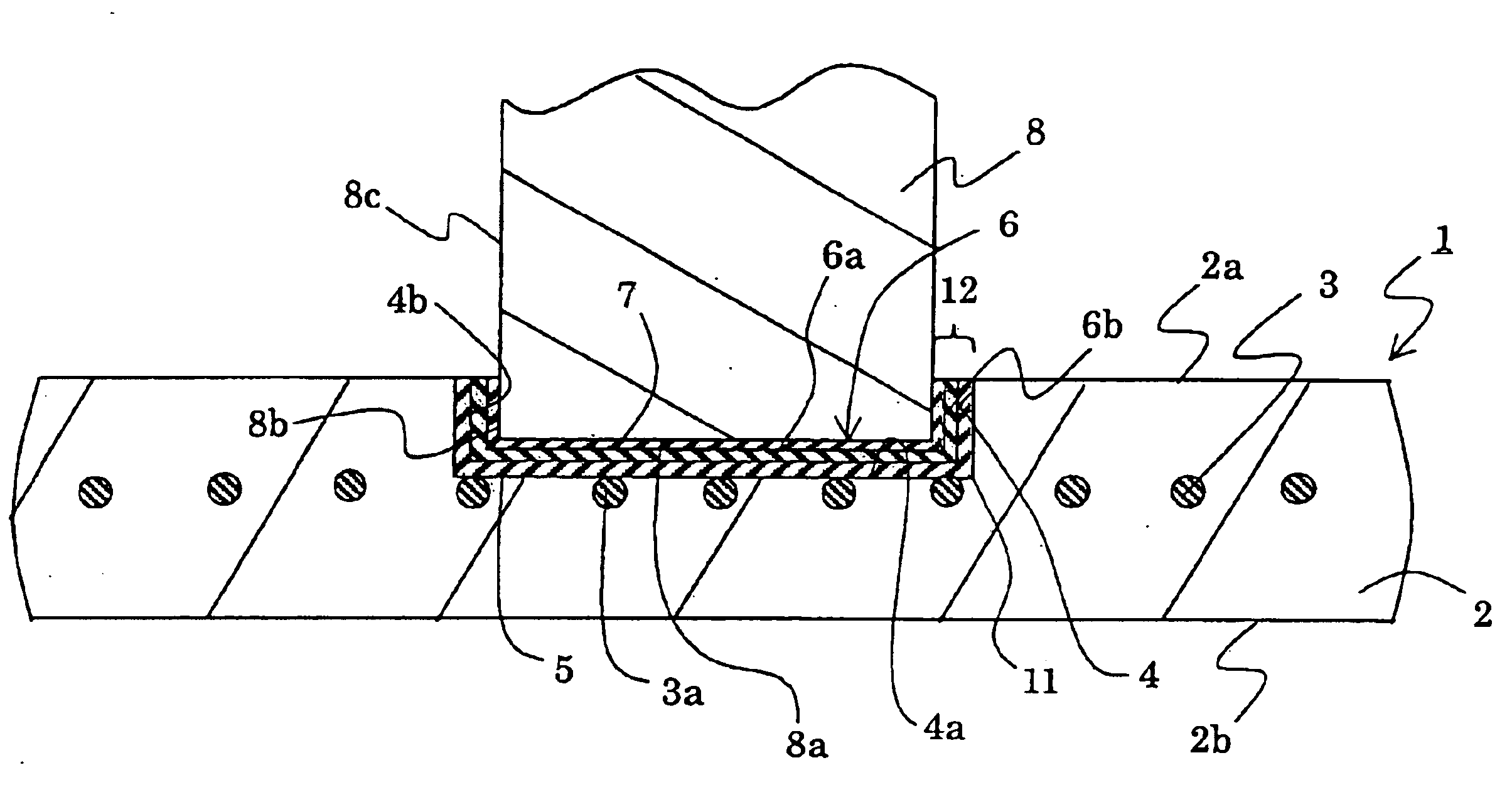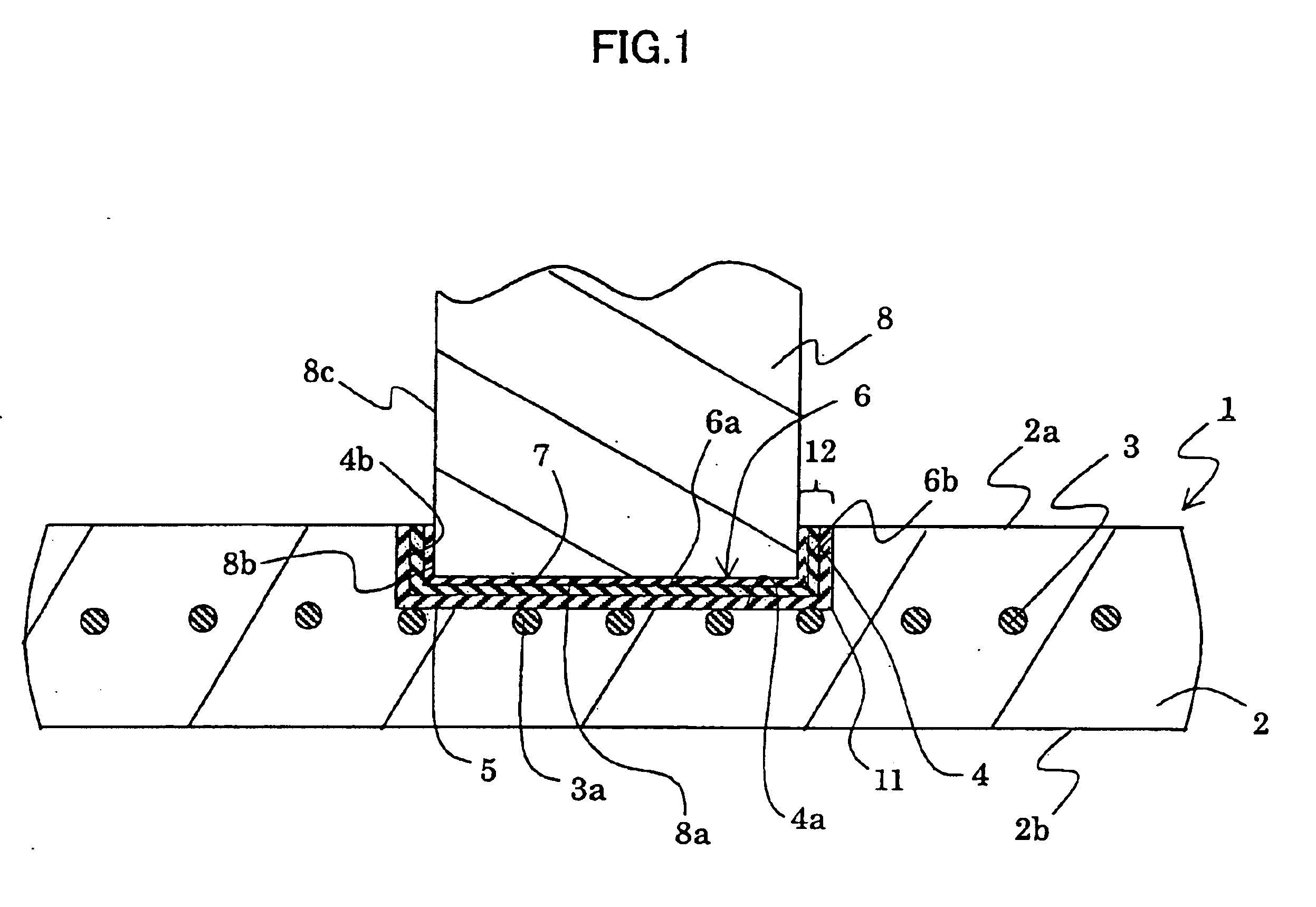Joined structures of metal terminals and ceramic members, joined structures of metal members and ceramic members, and adhesive materials
a technology of metal terminals and ceramic members, applied in the direction of textiles and paper, solid-state devices, non-electric welding apparatus, etc., can solve the problems of cracks in ceramic members near the inner wall surface, reducing production yield, and cooling the ceramic member step, and achieve the effect of high bonding strength
- Summary
- Abstract
- Description
- Claims
- Application Information
AI Technical Summary
Benefits of technology
Problems solved by technology
Method used
Image
Examples
experiment a
A ceramic electrostatic chuck was produced and a sample for a tensile test was cut therefrom. That is, aluminum nitride powder was filled in a mold and sealed with a carbon foil. A metal mesh was embedded in the aluminum nitride powder. The mesh is obtained by knitting molybdenum wires having a diameter of 0.12 mm at a density of 50 wires per inch. The aluminum nitride powder with the mesh therein was hot press sintered to a maximum temperature of 1950° C. under a pressure of 200 kg / cm2 for a holding time period of 2 hours at 1950° C. to produce a sintered body. The sintered body had a relative density of not lower than 98.0 percent. The mesh was embedded within the sintered body so that the mesh may function as an electrode for electrostatic chuck. A ceramic member, with a length of 20 mm, a width of 20 mm and a thickness of 2 mm, was cut out from the sintered body. A circular hollow 4 with a diameter of 6 mm and a depth of 1 mm was formed in the central portion of the ceramic memb...
experiment b
The same ceramic member and metal terminal as those used in Experiment A were joined with each other to produce four samples. However, the following three conditions were different from those applied in Experiment A. That is, an aluminum solder was used, and the solder was heated at 610° C. and under vacuum. Consequently, cracks were confirmed by visual evaluation within AlN in all of the four samples.
experiment c
The same ceramic member and metal terminal as those used in Experiment A were joined with each other to produce four samples. However, the following three conditions were different from those applied in Experiment A. That is, a solder of Ag—Cu—Ti system was used, and the solder was heated at 850° C. and under vacuum. Consequently, cracks were confirmed by visual evaluation within AlN in all of the four samples.
PUM
| Property | Measurement | Unit |
|---|---|---|
| weight percent | aaaaa | aaaaa |
| melting point | aaaaa | aaaaa |
| melting point | aaaaa | aaaaa |
Abstract
Description
Claims
Application Information
 Login to View More
Login to View More - R&D
- Intellectual Property
- Life Sciences
- Materials
- Tech Scout
- Unparalleled Data Quality
- Higher Quality Content
- 60% Fewer Hallucinations
Browse by: Latest US Patents, China's latest patents, Technical Efficacy Thesaurus, Application Domain, Technology Topic, Popular Technical Reports.
© 2025 PatSnap. All rights reserved.Legal|Privacy policy|Modern Slavery Act Transparency Statement|Sitemap|About US| Contact US: help@patsnap.com



